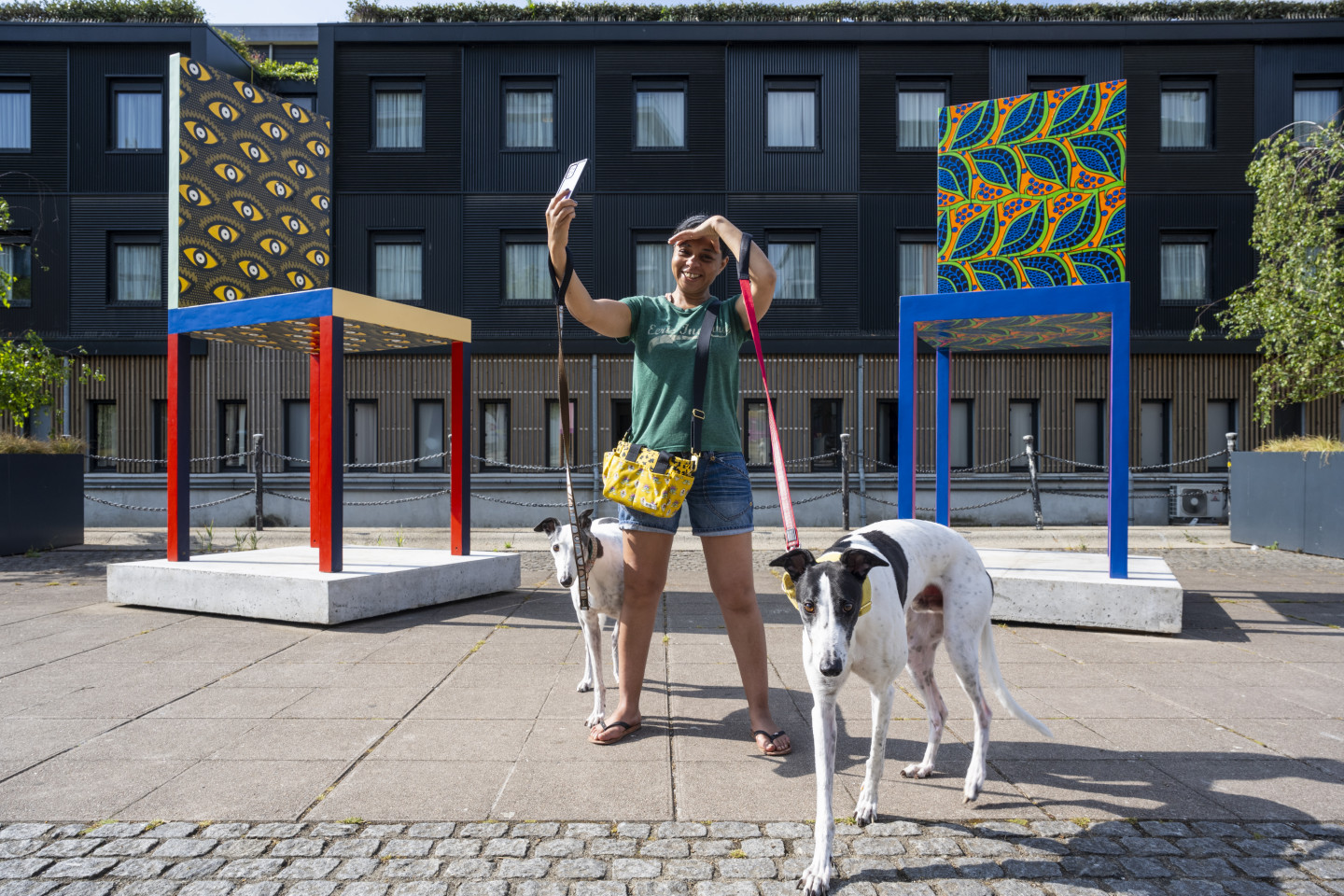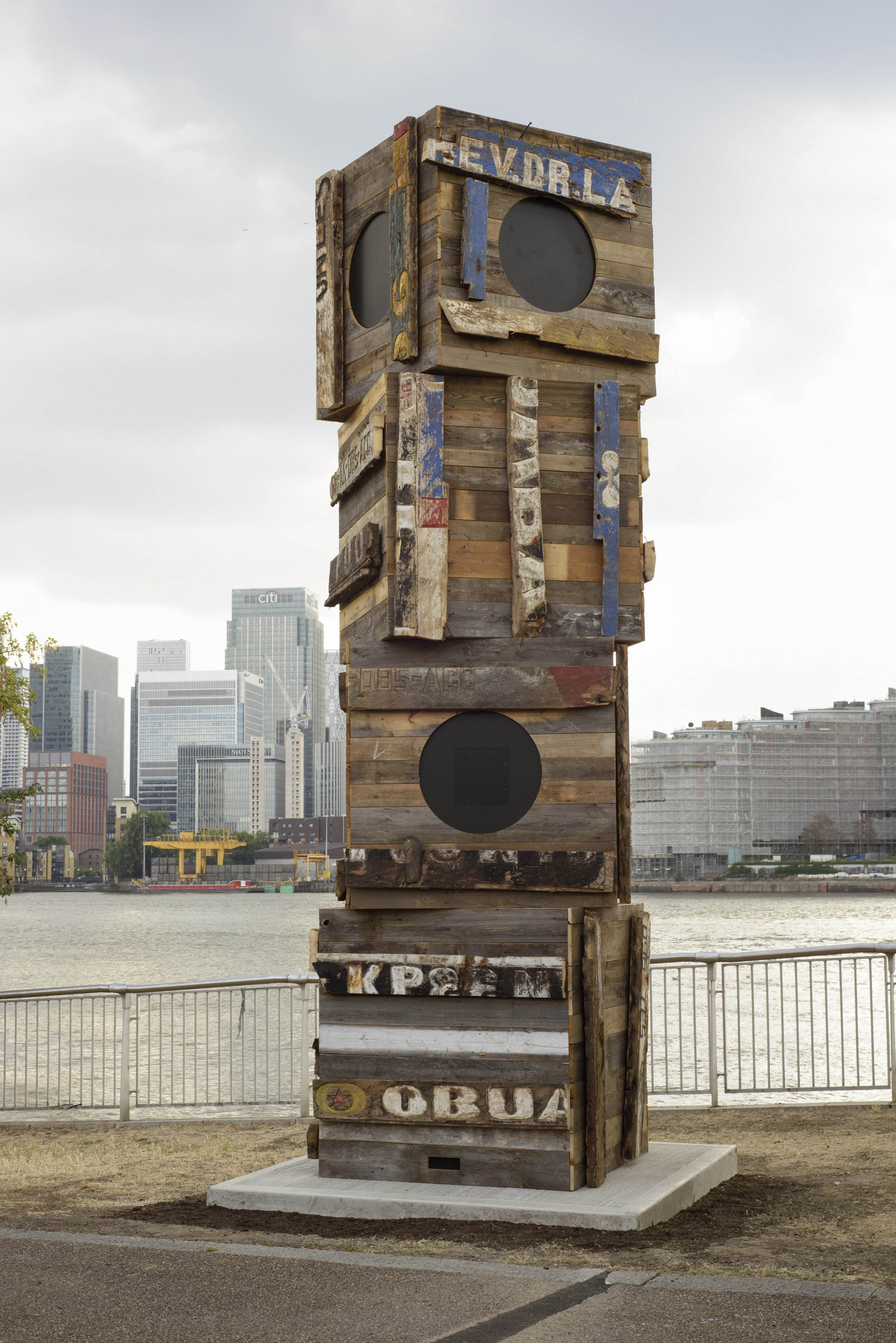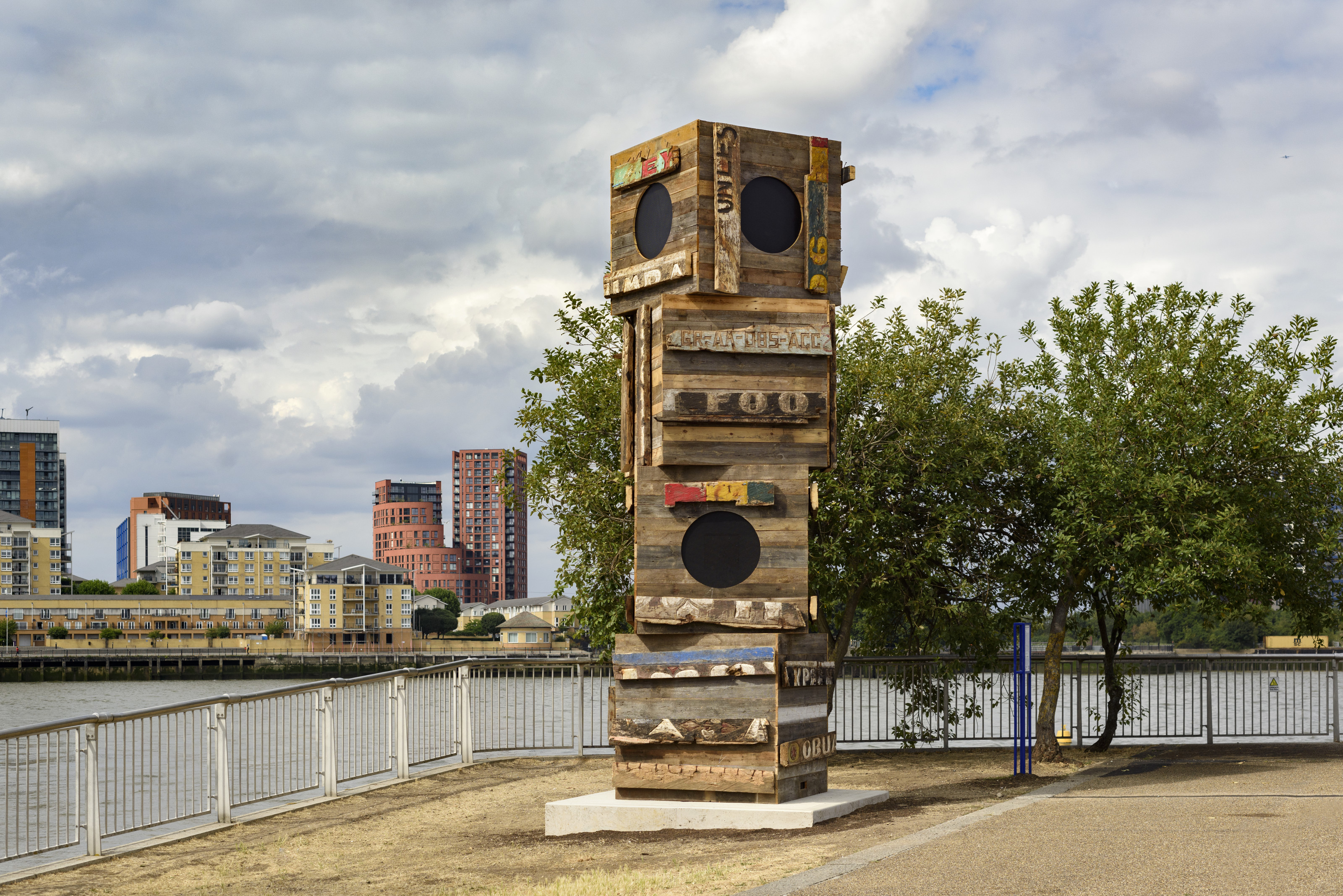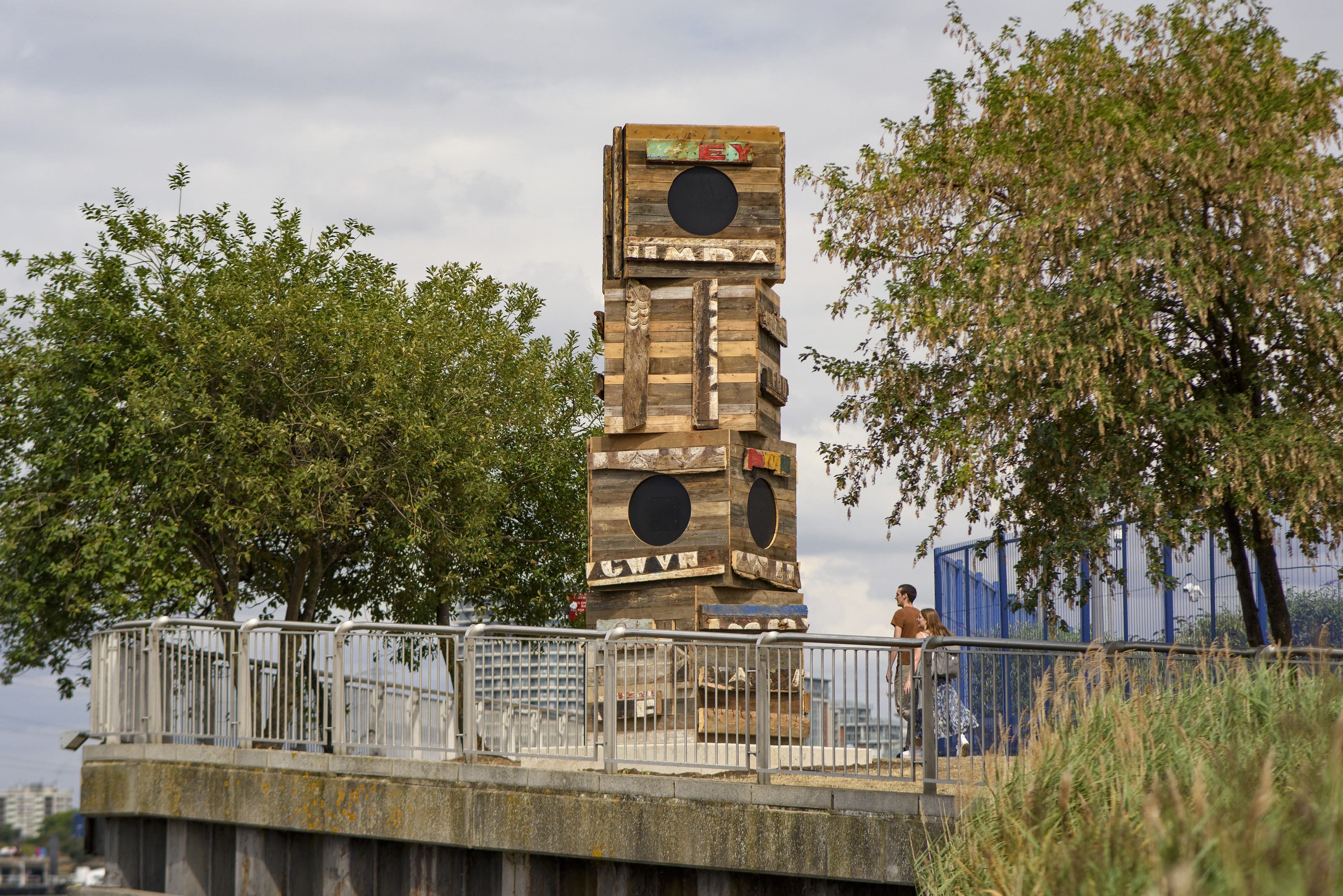Serge Attukwei Clottey
Tribe and Tribulation, 2022
Tribe and Tribulation is a totemic sculpture, which stands over five metres tall. The cubes are made of reclaimed wood, including painted timber from Ghanaian fishing boats, integrating Clottey’s interest in our relationship to the ocean, migration and the afterlife of objects. The sculpture includes an embedded sound installation, with recordings from Cape Coast Castle, Elmina Castle, James Fort and a location on the Meridian Line in Tema. The first three sites were former slave forts in the then Gold Coast, with some of the buildings now designated as world heritage sites, honouring the memories of the enslaved captives. The sound installation in Tribe and Tribulation is projected north, south, east and west, inviting the listener to consider how life at these historic sites has changed over the years, with the waters now used by local fishermen.
Tribe and Tribulation is the first commission that is part of The Line’s Longitudinal Dialogues programme that takes its location on the Greenwich Meridian as a starting point for global cultural exchange. The work’s location makes an important connection to historical trade routes and encourages listeners to focus on the role of water, a recurrent theme in Clottey’s work, and the Greenwich Meridian that connects London and Accra.
As part of the engagement programme for this commission, workshops were delivered at six primary schools in each city during Spring 2022. Around 600 children participated, using plastic rubbish and recyclable materials to create masks inspired by Clottey’s practice. On 26th May 2022, at the same time in both London and Accra, children took part in a procession to celebrate the project. Watch the film of the school processions by clicking on the video link.
The development of the commission has been supported by Clottey’s research residency at Royal Museums Greenwich in September 2021. Tribe and Tribulation is co-curated by The Line and Arup Phase 2.
Courtesy the artist and Simchowitz Gallery
Supported by
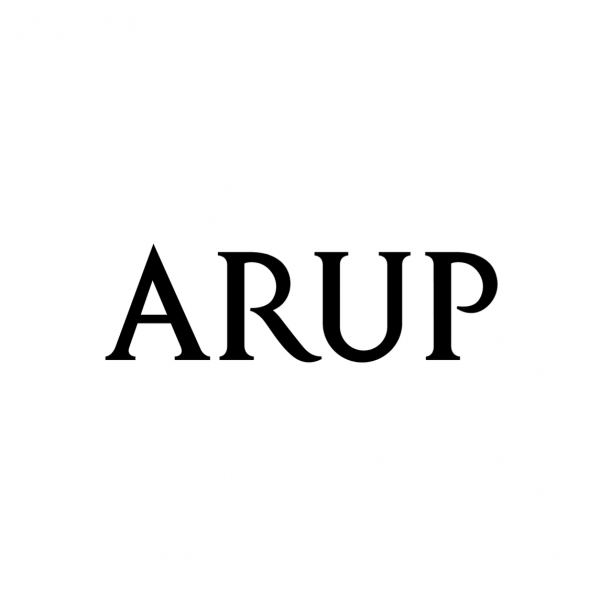
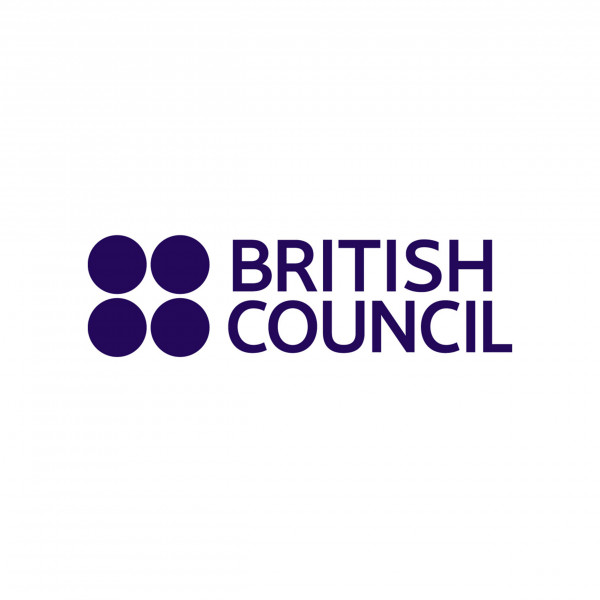
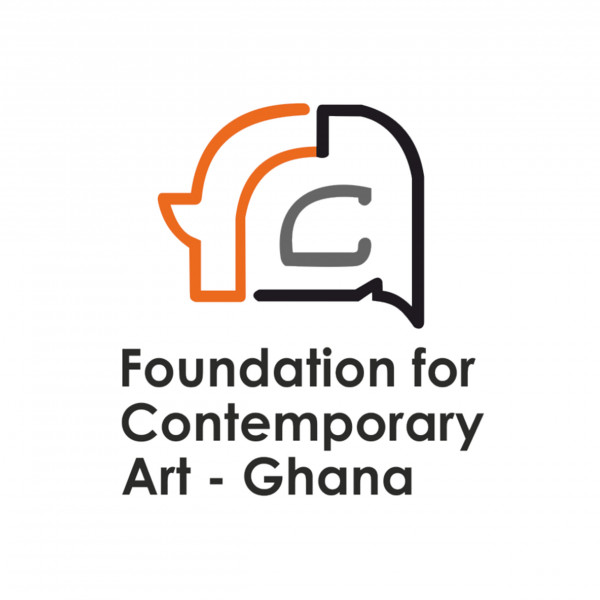
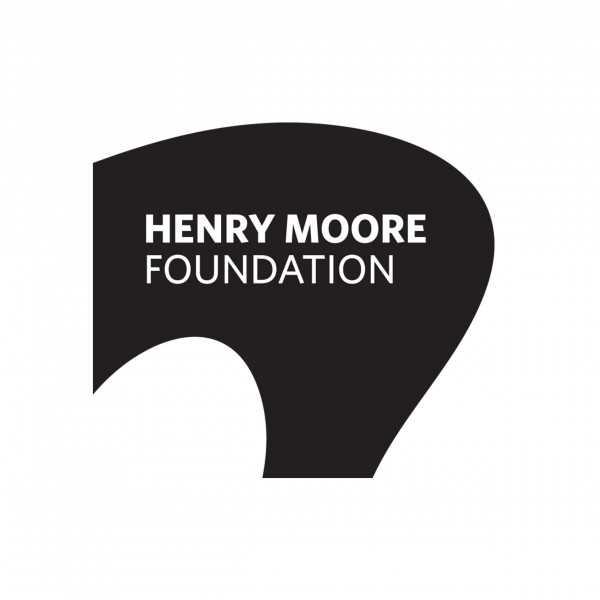
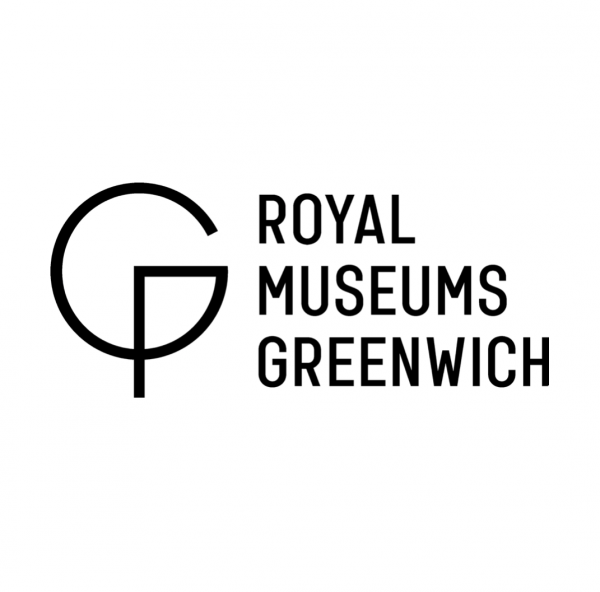
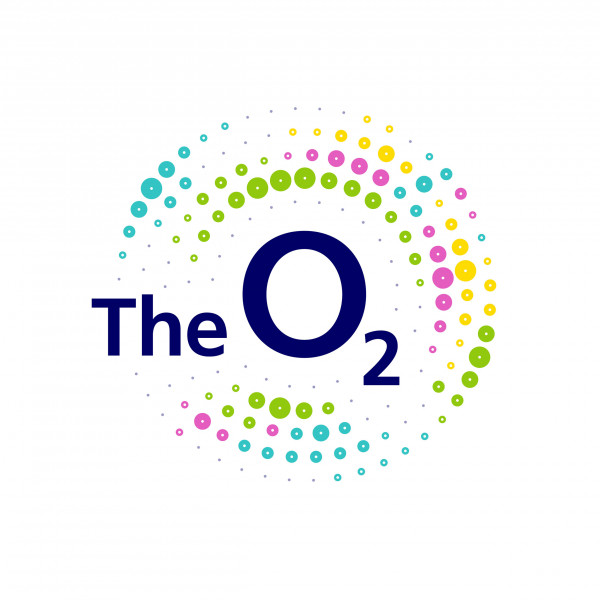
Biography
The art of Serge Attukwei Clottey (b. 1986, Ghana) primarily employs found materials from the artist’s hometown in Accra, Ghana in order to create a dialogue with the city’s cultural history and identity.
Utilising everyday objects such as discarded Kufuor gallons, car tyres, and recycling boat wood as his canvas, Clottey inscribes patterns and text that uplift the miscellaneous materials into symbols of Ghana’s vernacular economic system of trade and reuse.
The celebration of the yellow gallon containers (initially used as cooking oil canisters and then recycled to collect water or fuel) applied throughout Clottey’s work, stems from a desire to find ways to inspire people to work with plastics and recycle it in creative ways. This has become a prominent motif throughout Clottey’s oeuvre, and the artist has named this distinctive practice ‘Afrogallonism’.
Recent projects have included the large scale ‘Afrogallonism’ installations, The Golden Falls for Desert X AlUla 2022 in the UAE and Shooting For Hunger, an installation for the Food Forever programme staged at Kew, London during the summer of 2022.
Image: Thierry Bal
